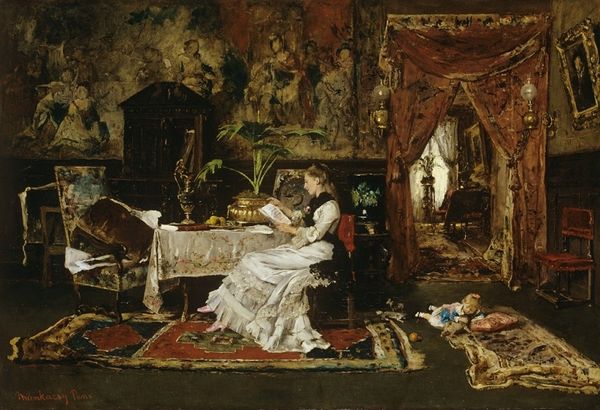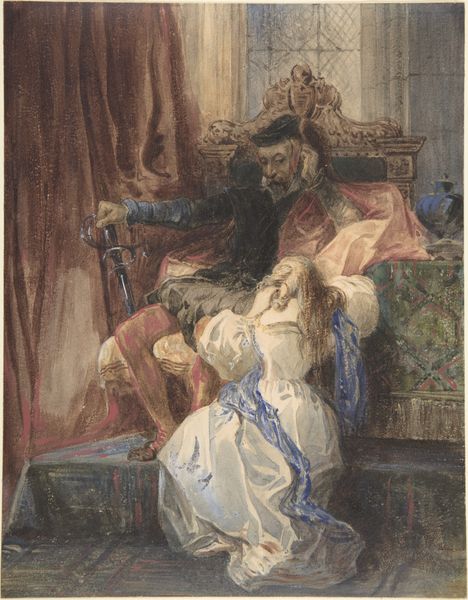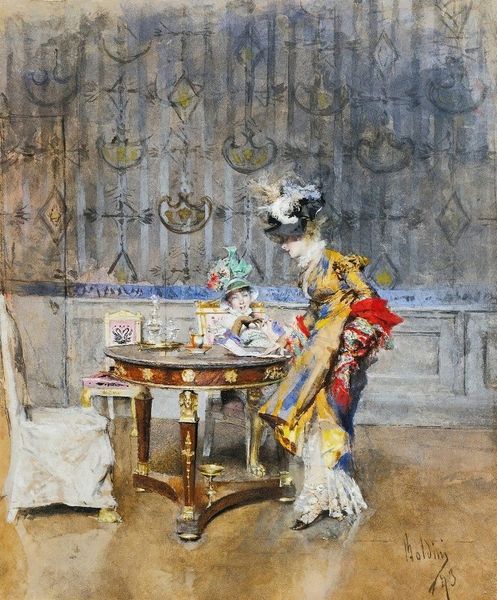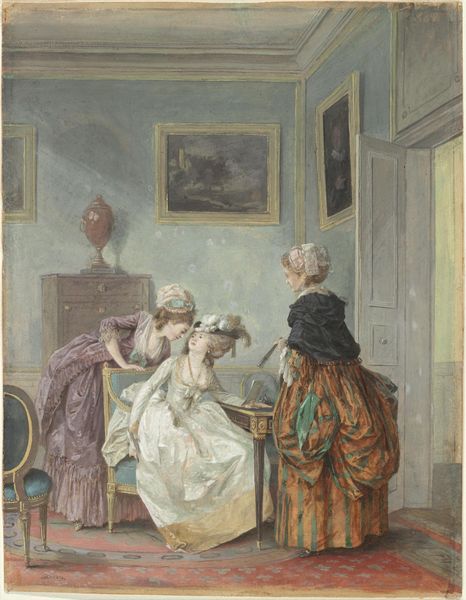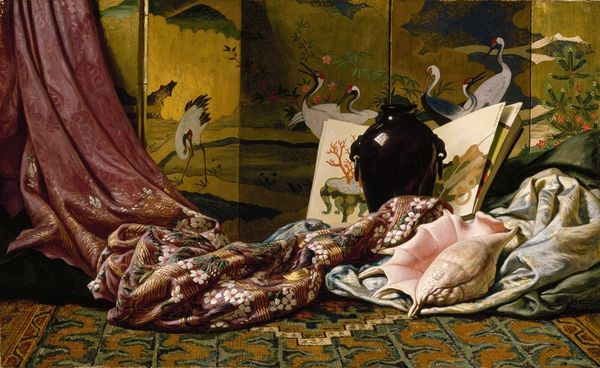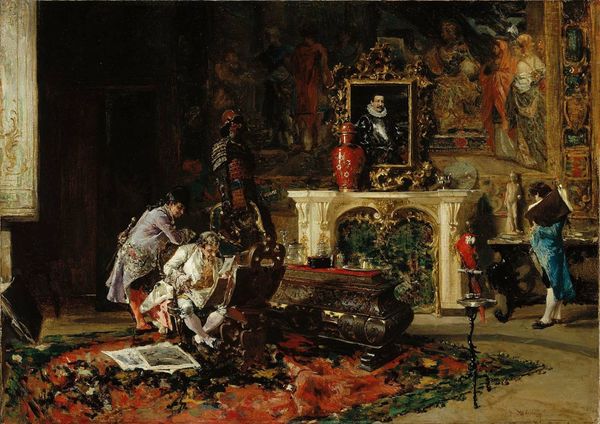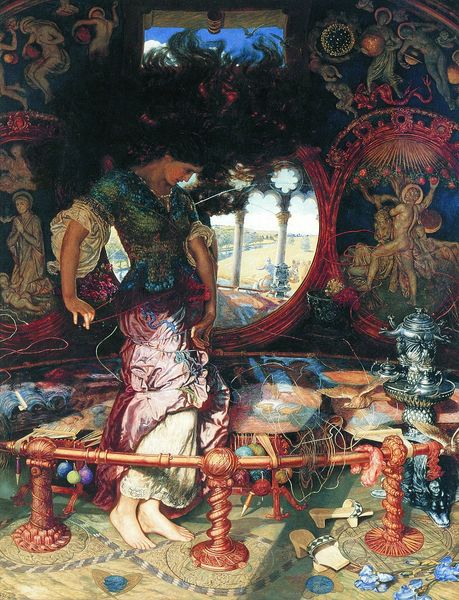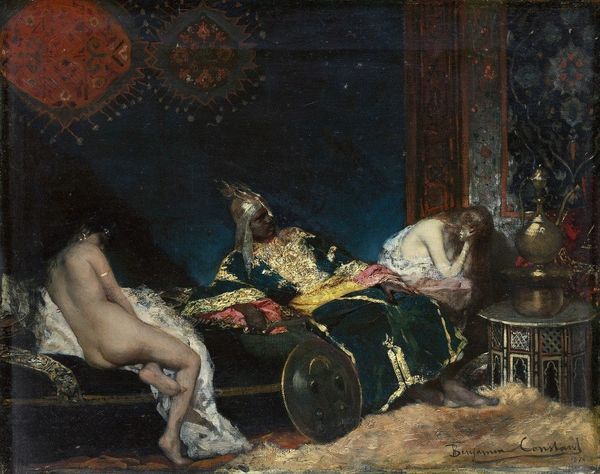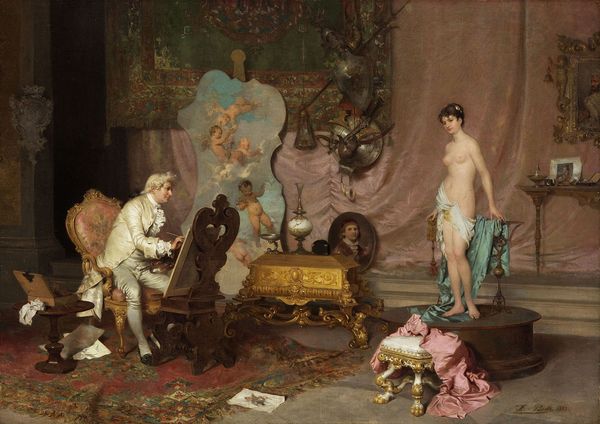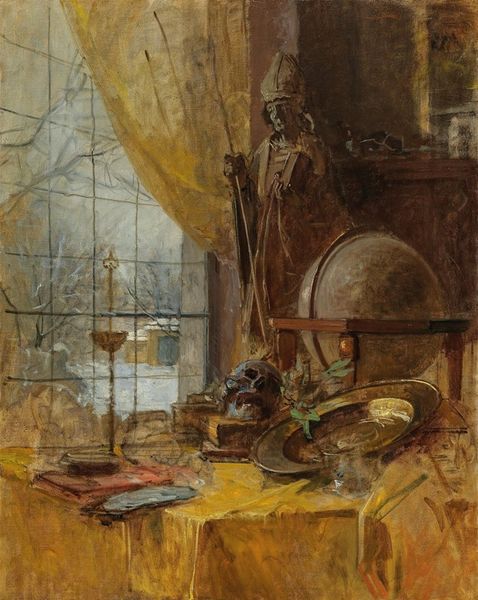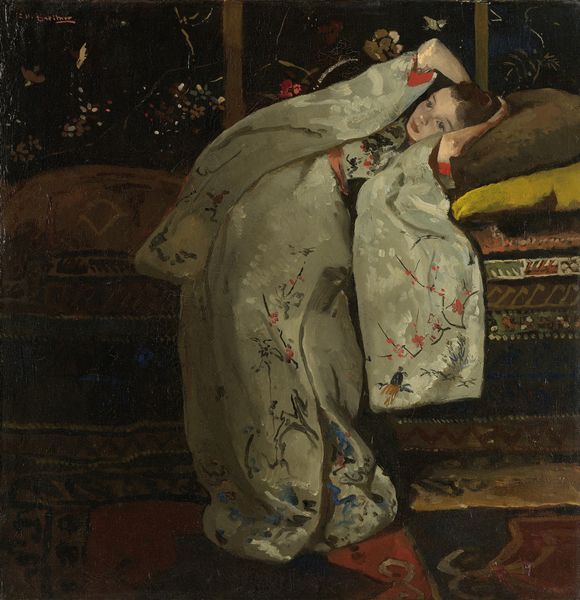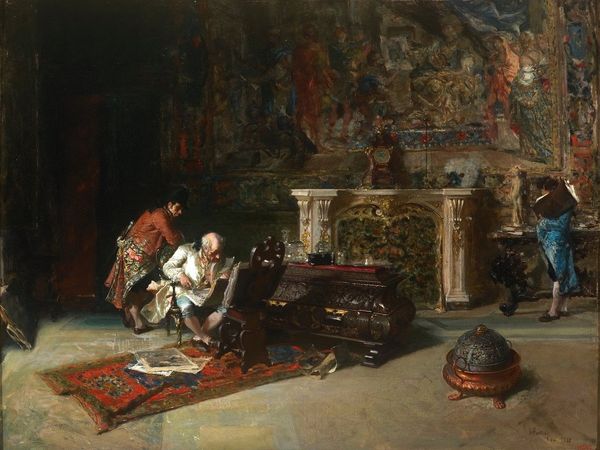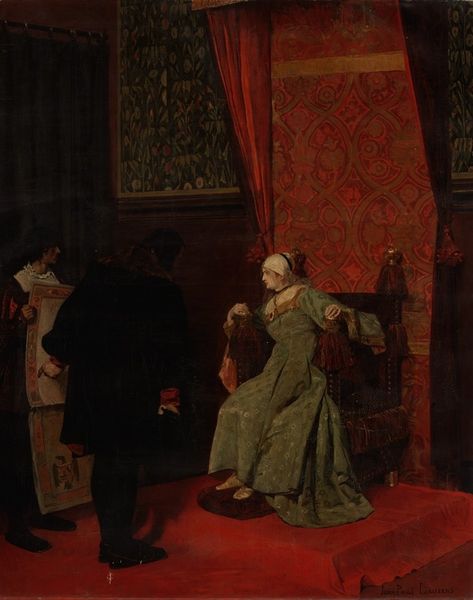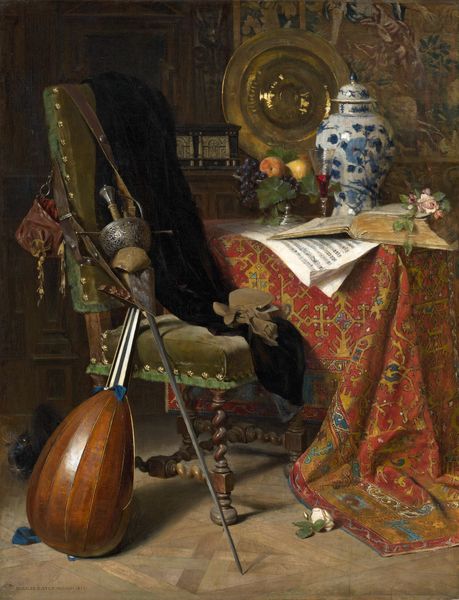
Dimensions: 92.5 cm (height) x 86.5 cm (width) (Netto), 128 cm (height) x 122 cm (width) x 10 cm (depth) (Brutto)
Editor: We’re looking at “The Death of Queen Sophie Amalie,” an 1882 oil painting by Kristian Zahrtmann, currently held at the SMK in Copenhagen. There’s so much visual information here. It strikes me as a chaotic, theatrical composition. What do you see in this piece? Curator: Initially, the impasto technique draws the eye. The thickly applied paint creates texture and dimension, particularly in the Queen's dress. The composition itself utilizes a clear hierarchy. The Queen's prone form acts as a focal point. Notice how the artist positions the secondary figures and objects – like the overturned strongbox and scattered coins – to lead the eye back to her. What does this visual arrangement suggest to you? Editor: It feels as if the Queen is the centre, the main subject, yet the chaos suggests the opposite – disorder and distraction, maybe mirroring the disruption of death itself? How do we move beyond the immediate narrative? Curator: Consider the painting's use of color and light. Observe how Zahrtmann contrasts the Queen's pale complexion and shimmering gown with the darker tones surrounding her. Is there tension and harmony at play within that dichotomy? Editor: Definitely, it feels as if the whiteness stands in contrast with a more earthy background. The lighter elements almost pop up and give the piece its particular theatricality. It feels as though the very textures of fabrics or surfaces serve a specific purpose, don't they? Curator: Precisely! These qualities aren’t mere embellishments; they serve to heighten the drama and emphasize certain themes. In closing, the way that formal qualities—texture, composition, light—create not just a visual depiction, but also suggest profound meaning. Editor: That really clarifies how we can read artworks on multiple levels, thank you! I never thought to see historical paintings from the lens of shapes and textures, more than just representation.
Comments
statensmuseumforkunst almost 2 years ago
⋮
Surrounded by silverware and magnificent silks, the dowager queen Sophie Amalie (1628-1685) breathes her last. A grotesque figure whose status and wealth cannot deliver her from a violent and painful death by asphyxiation. Leonora Christine's memoirs The painting belongs to the group of around 100 pictures, studies, and sculptures that Zahrtmann created on the basis of Leonora Christine’s (1621-1698) memoirs Jammersminde (Memory of Woe) from 1869. Her life and destiny, spanning the range from wealth and power through imprisonment and shame to rehabilitation and release, fascinated Zahrtmann for almost 50 years. Sophie Amalie was behind Leonora Christine’s arrest and 22 years of imprisonment in Blåtårn. Zahrtmann hated her for that, and his sentiments are apperent with exceptional honesty in this depiction of her death throes. Renewer of historical painting As an artist, the splendour-loving Zahrtmann became the great renewer of historical painting. In addition to his personal interpretations of Leonora Christine’s life, he was particularly interested in scenes of classical mythology. Over the years the colours became more intense and the interpretations more private, making them more bizarre in the eyes of his contemporaries. In his late figure compositions, he brought together "exceptional" human beings and obvious homoerotic fascinations in a high-tension exchange between life and work.
Join the conversation
Join millions of artists and users on Artera today and experience the ultimate creative platform.
